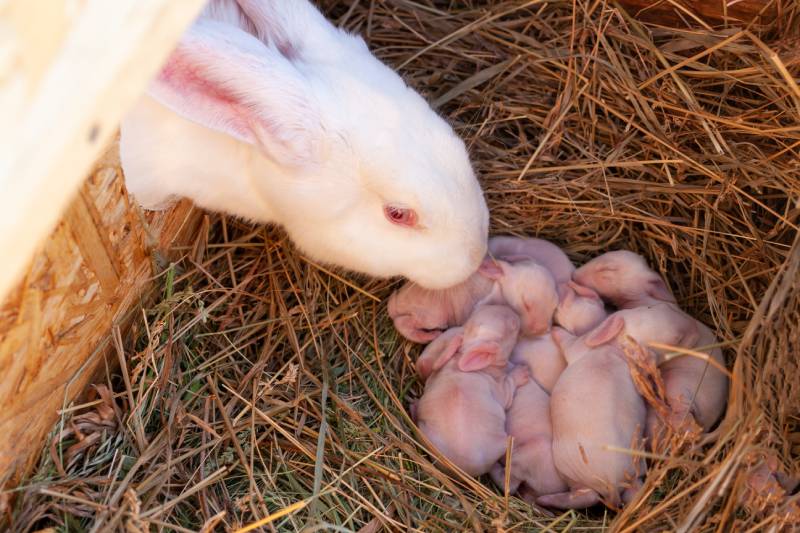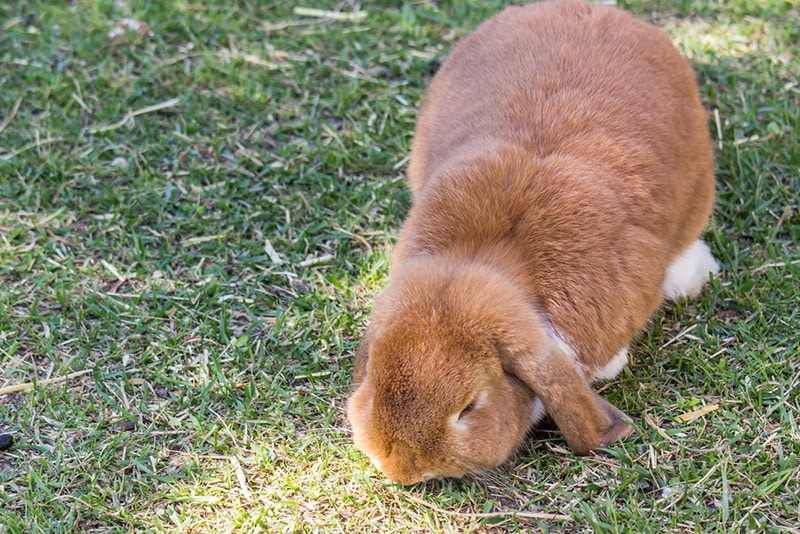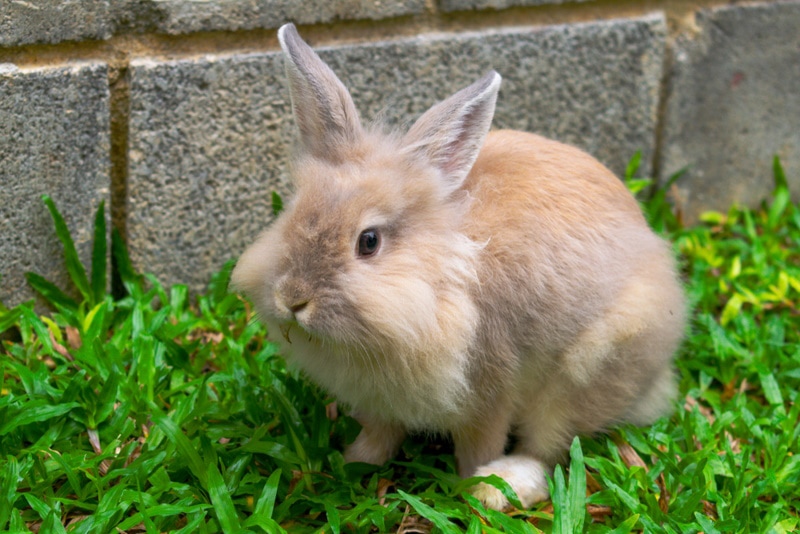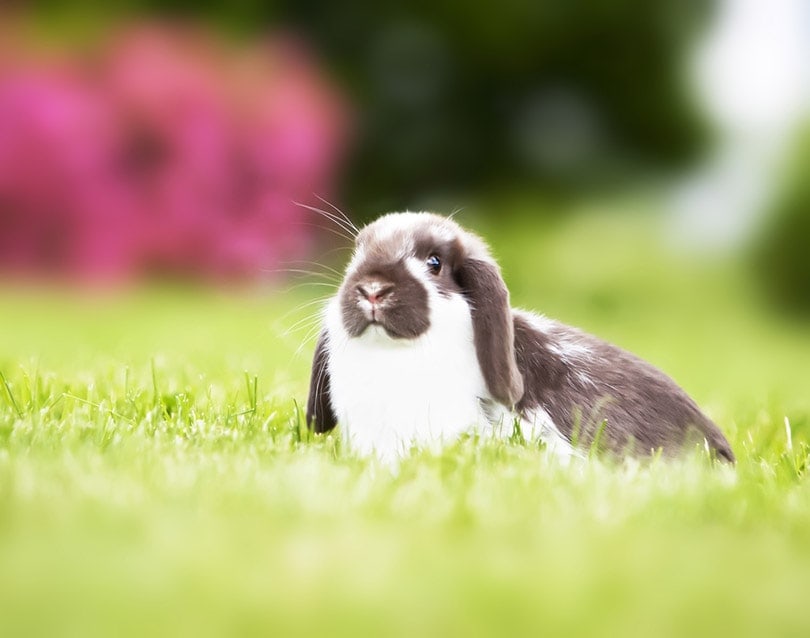What Do I Do After My Rabbit Gives Birth? 10 Vet-Approved Suggestions
Updated on

Do you have a new litter of bunnies to care for? Remember that it’s just as important to take care of the new mother as it is for her newborns, also called kits. Whether you were planning for these baby bunnies, or they took you by surprise, keep reading below for the essential steps to follow after your rabbit has given birth.

The 10 Things to Do After Your Rabbit Gives Birth
1. Assess the Mother
It might be difficult to determine if your rabbit’s labor is finished. A doe (female rabbit) can give birth to anywhere between four to 15 kits. At times, your rabbit may be experiencing difficulty with birth (known as dystocia). The most common signs of this are visible persistent contractions of her abdomen with no kits being born, straining, bloody or green-brown colored discharge from her vulva, and restlessness. If you suspect that your doe is experiencing difficulty during her labor, consult your veterinarian.
2. Count the Babies
If your rabbit’s labor has finished, it’s very important to count the number of kits she’s given birth to. There are two main reasons for this:
- Cannibalism is the primary reason why kits don’t last, as a mother may eat her own young if she feels stressed. Knowing how many kits she has will help you notice if and when she resorts to cannibalism. This is an indication that you need to intervene and determine what is stressing out your rabbit before she cannibalizes her entire litter.
- Does have eight to 10 teats and sometimes give birth to more kits than the number of teats they have. In such a case, you might have to foster some of the kits.
3. Separate the Male Rabbit
An important step is always to separate the father (this should be done a few days before your female gives birth). The male rabbit can impregnate the female again almost immediately after birth, leading to another litter before the first one has been weaned. This can create an unhealthy situation for the mother as well as her newly born kits. Male rabbits do not partake in the rearing of their kits; the task of feeding, caring for, and weaning the kits is solely the female’s responsibility.

4. Check the Kits
It’s not uncommon for a kit to pass away during or shortly after birth. You should carefully check the kits to ensure they are moving, breathing, and clean. Because they were likely born overnight, the mother has had time to clean them but may not have had time to remove any afterbirth from the area. You can help her by clearing this away.
5. Keep the Kits Warm & Secluded
If your rabbit’s hutch is in a draft, or if it’s cold in general, consider warming up the room and minimizing excess noise or distractions. Do not attempt to apply heat directly to kits, as a sudden change in body temperature can be very dangerous for them.

6. Look for Signs of Nursing
A mother rabbit’s instinct is to stay away from the nest and not draw attention to the location of her kits. Therefore, you may not see her actually nursing her newborns all the time. However, you can look for signs that the kits are well-fed.
This includes warm, pink skin and round tummies that are full from feeding. Hungry babies are lethargic, unthrifty, and smaller than their littermates.
7. Keep the Nesting Box Clean
The nesting box will become soiled quickly as the kits poop in it constantly. Be sure to remove the bedding and towel daily, wipe it out with a cloth, and provide a fresh towel with clean straw or hay daily. This will ensure the kits are clean, dry, and healthy.

8. Provide Food and Water
The mother rabbit will be quite hungry as she provides for her new litter. Be sure she has plenty of adequate nutrition to stay healthy and well while she does. A quality rabbit pellet food will ensure her kits get the nutrition they need as well. You should offer food and water outside of the nest, as kits may start to nibble at solid foods as young as 2 weeks. Kits eat before they are weaned (at approximately 8 weeks).
9. Have Mother Rabbit Spayed
A few weeks after the kits have been weaned, it’s safe to have the mother rabbit spayed. This is the safest option for her and may even help prevent future health problems in addition to unwanted litters.
Both male and female rabbits can be neutered or spayed. Males should be spayed because they have a tendency to mount just about anything, not just other rabbits. They can attempt to mount other pets, socks, shoes, blankets, and various other household items. Female rabbits should be spayed because intact females have a very high chance of developing uterine tumors. The odds of such tumors developing are as high as 80% in some breeds of rabbits.

10. Have the Kits Spayed or Neutered & Vaccinated
In addition to preventing unwanted litters, having the kits spayed or neutered comes with benefits as well. Male rabbits will be less aggressive and display fewer unwanted sexual behaviors. Female rabbits may also be less aggressive and have less chance of reproductive cancers. They are also less prone to pseudo- or false pregnancies.
Though there are no approved vaccines for rabbits in the United States, other countries do have protocols for some vaccinations for rabbits. Discuss vaccination protocols with your veterinarian. Rabbits are usually vaccinated for myxomatosis and rabbit haemorrhagic disease. Rabbits can be vaccinated once they are around 5 to 6 weeks old.

Conclusion
By following the steps above, you are ensuring that every bunny in the litter has the best chance at a long and healthy life. Be sure to check on the kits often but also trust that mama rabbit knows her instincts and can care for them too. Support her like you would any new mom and congratulate her on a job well done with love and attention!
Featured Image Credit: Bragapicture, Shutterstock











